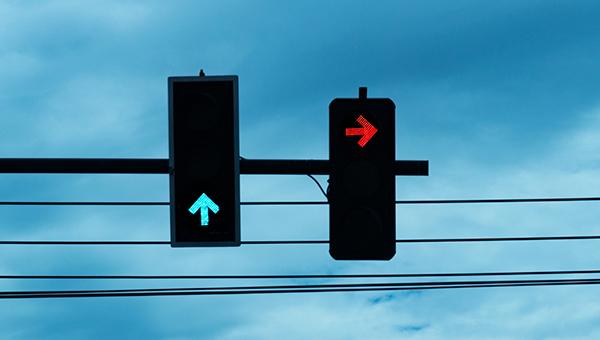Rapid ESC hs-cTn Algorithms Best 3-Hour Protocol for MI Rule-out: Meta-analysis
The findings are conclusive enough to determine that the 0/3-hour algorithm “is not safe,” says Chien-Chang Lee.

To rule out MI among patients presenting to the emergency department with chest pain, newer, more rapid European Society of Cardiology (ESC) algorithms for high-sensitivity cardiac troponin assays—based on 0/1- and 0/2-hour protocols—are more accurate than the previously used 0/3 hour algorithm, according to a new meta-analysis.
The findings confirm 2020 European recommendations, which already promote the use of high-sensitivity cardiac troponin (hs-cTn) with the accelerated algorithm when available.
High-sensitivity troponin testing has been available in Europe and Asia for several years, but the accelerated algorithms have not been as widely adopted, leading to more emergency room crowding as one consequence, senior study author Chien-Chang Lee, MD, ScD (National Taiwan University Hospital, Taipei), told TCTMD.
Along with clinical presentation, the 0/3-hour algorithm identifies or rules out MI using a cardiac troponin threshold based on the 99th percentile of a normal reference population at presentation and at the 3-hour mark. The newer 0/1 and 0/2 algorithms triage patients by applying assay-specific cardiac troponin thresholds lower than the 99th percentile of a normal reference population at presentation along with absolute changes within the first or second hour.
While use of the 0/3-hour algorithm does lead to patients being observed longer in the emergency department—something that might give confidence to many unsure physicians—the meta-analysis confirms that “after you use that algorithm, you miss more patients with myocardial infarctions than the accelerated algorithms like the 0/1 or 0/2 hour,” he said.
Previous research has indicated that this might be the case, Lee continued, but these studies were too small and underpowered “to reach firm conclusions.” This prompted his team, led by Cho-Han Chiang, MD (National Taiwan University Hospital), to pool 32 international studies of 20 prospective cohorts into their meta-analysis, published online yesterday in the Annals of Internal Medicine, which Lee says “finally” confirms higher sensitivity of the 0/1- and 0/2-hour algorithms with “sufficient power.”
In a cohort of more than 30,000 patients they found pooled sensitivity values of 99.1% and 98.6% for the 0/1- and 0/2-hour algorithms, respectively, with negative predictive values of 99.8% and 99.6% for ruling out MI. These values for the 0/3-hour algorithm were only 93.7% and 98.7%, although sensitivity was attenuated in studies that did not use clinical criteria (90.2%) compared with studies that did (98.4%). For ruling in MI, all three algorithms performed similarly, but the authors note “substantial” heterogeneity across the studies included.
The findings are convincing enough “that we can consider that 0/1-hour or 0/2-hour [algorithms] should be the standard of care in emergency departments which use high-sensitivity troponins, and 0/3 hour is not safe,” Lee said, adding that this may require some “workflow reengineering” as well as some new point-of-care testing equipment for many emergency departments.
On top of wanting physicians to adopt the rapid algorithms and forgo using the 0/3 protocol, Lee said, “we need also to educate the general public. Patients that have chest pain are used to waiting in emergency rooms for 6, 7, 8 hours, but now their physician probably will exclude about one-third to one-half of patients within about 2 hours, so the patients themselves also need to understand that this is new evidence to show that this test is very, very sensitive [and to] let them know that they will be safe and okay.”
Confirmation and Caveats
In an accompanying editorial, Andrew McRae, MD, PhD (University of Calgary, Canada), and colleagues write that the study confirms both that the “rule-out criteria in the 0/1-hour and 0/2-hour algorithms are sufficiently sensitive to reliably exclude myocardial infarction without the need for further testing” as well that the “rule-in criteria in the 0/1-hour and 0/2-hour algorithms are sufficiently specific to reliably diagnose myocardial infarction and to initiate appropriate anatomical investigations and therapy.”
The 0/2-hour algorithm, they note, “may classify more patients as ruled in or ruled out, leaving fewer in the observational zone, at the expense of an extra hour required in the emergency department.” As such, these algorithms should be “standard practice” for the specific high-sensitivity cardiac troponin assays used in these studies, the editorialists say.
Commenting on the study for TCTMD, Yader Sandoval, MD (Mayo Clinic, Rochester, MN), said that a challenge for physicians treating patients with chest pain has been that there are “so many different approaches—whether it's with biomarkers, biomarkers and ECG, biomarkers and risk scores—that one could try to tease out which are the patients at low risk,” he said.
Sandoval supports the use of the more-rapid algorithms. His institution started using hs-cTn testing in 2018 and with it the 0/2-hour algorithm using sex-specific 99th percentiles integrated with “absolute delta changes and a modified HEART score, which is a history, ECG, age, and risk factors following myocardial infarction rule-out.”
But “an important caveat,” he said, is that the newer European algorithms use a rule-out threshold at the limit of detection while the available clinical assays in the United States can only use a threshold at the slightly higher limit of quantification. Also, many of the studies included in the meta-analysis comprise cohorts of patients solely with chest pain, but “patients that are getting cardiac troponin testing in the emergency department have an array of symptoms” and only an estimated 50% or so present with chest discomfort in the US, Sandoval said. Lastly, results can vary depending on how early or late a patient presents.
“At the end of the day, while high-sensitivity assays are a very good tool for diagnosis and risk stratification, clinicians cannot forget that we must use the whole clinical context [to really] drive how we take care of these patients,” he concluded.
Refinements Needed
Looking forward, Lee acknowledged that work is still needed to refine the algorithms. Even with current protocols, about 25% of patients “stay in the observation zone” without a diagnosis, Lee said. “In addition, the high-sensitivity troponins will have some difficulty in interpretation for patients with myocardial injury, for example, a patient with chronic kidney disease, a patient with congestive heart failure, or even a patient with sepsis. . . . The cutoff for interpretation of the troponin in these groups of patients still needs more research.”
McRae and colleagues agree that there remain evidence gaps. The probability of MI is greater than 10% in those who remain in the observation zone, but there is little evidence to aid physicians “on the ideal timing and interpretation of subsequent hs-cTn measurements,” they write. They call for implementation studies from institutions already using high-sensitivity troponins to learn more.
As for further testing after rule-out by high-sensitivity cardiac troponin testing, the new American College of Cardiology/American Heart Association chest pain guidelines say this isn’t needed for patients at low risk. “However, even the best-performing risk scores stratify about two-thirds of patients as moderate to high risk,” the editorialists say. “Risk scores will misclassify some patients with low troponin concentrations as moderate risk, meaning that patients classified as moderate risk will undergo noninvasive testing with minimal potential for benefit.”
They argue that better-performing clinical risk scores are needed “to limit low-value testing in patients who are unlikely to benefit.” Additionally, McRae and colleagues conclude, “a new generation of shared decision-making tools for low-risk chest pain that comprehensively addresses risks and potential benefits of additional testing may be warranted.”
Yael L. Maxwell is Senior Medical Journalist for TCTMD and Section Editor of TCTMD's Fellows Forum. She served as the inaugural…
Read Full BioSources
Chiang C-H, Chiang C-H, Pickering JW, et al. Performance of the European Society of Cardiology 0/1-hour, 0/2-hour, and 0/3-hour algorithms for rapid triage of acute myocardial infarction: an international collaborative meta-analysis. Ann Intern Med. 2021;Epub ahead of print.
McRae AD, O’Rielly CM, Lang ES. High-sensitivity cardiac troponins and clinical decision making in caring for patients with chest pain. Ann Intern Med. 2021;Epub ahead of print.
Disclosures
- Chiang reports no relevant conflicts of interest.
- Lee reports receiving honoraria for lectures from Roche.
- Sandoval reports serving in the past on advisory boards for Roche and Abbott and as a speaker for Abbott.
- McRae reports receiving institutional research grants from Roche and the Canadian Institutes of Health Research.





Comments